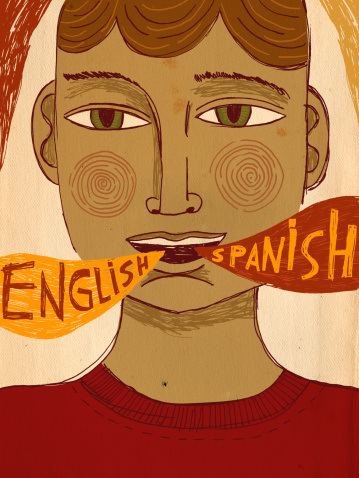 | ||
Translanguaging is the dynamic process whereby multilingual language users mediate complex social and cognitive activities through strategic employment of multiple semiotic resources to act, to know and to be.
Contents
It is believed that the term was first coined in Welsh by Cen Williams as trawsieithu; it can be controlled by both the student and the teacher. It maximises the child's bilingual ability and is being used across the world.
The 'trans' prefix emphasizes:
When talking about bilingualism, some scholars consider translanguaging as opposed to a "double monolingualism".
Session 2 what is translanguaging
History
Bilingual education is thought to go back as far as 4000–5000 years. Among the bilingual tablets unearthed in Aleppo, Syria in 1977, there were a number of pedagogical texts that were used to instruct young scribes.
Translanguaging as a focus of study first emerged in Bangor, Wales in the 1980’s. It is based on François Grosjean’s idea that bilinguals are not two monolinguals in one. Cen Williams and his colleagues were researching strategies of using both Welsh and English in a single lesson in a classroom setting. Cen Williams’ Welsh term “trawsieithu” was translated into English as “translanguaging” by their colleague Colin Baker.
Translanguaging Pedagogy
Translanguaging promotes a deeper understanding of subject matter, by discussing in one language and writing in another. Students will always reference what they already know from their first language when working with a second language. This helps students process the information and improve communication in their second language. When introduced in a Welsh bilingual classroom, translanguaging meant that the input and output languages were often switched. In this type of setting, students are typically asked to read a text one language and discuss it either orally or in written form in their second language. In the case of the Welsh classroom, the languages used were Welsh and English. This led to an increase of Welsh speakers in primary schools in 2007, with 36.5% of the students being able to speak Welsh, compared to 1987 when only 24.6% of students spoke Welsh.
Translanguaging includes, but is not limited to code-switching. Code-switching is an external function where a speaker of more than one language switches fluidly between their languages, as opposed to translanguaging, which is an internal strategy by which they use all of their linguistic resources to communicate. It is believed to be useful in helping eradicate linguistic hierarchy in multilingual school settings. Evaluating a student’s proficiency in a language differs from evaluating a student’s proficiency in language. Limiting students to one language creates an unequal system for evaluating a bilingual student’s performance versus evaluating a monolingual student’s performance.
Teachers
Making use of translanguaging in the classroom does not require the teacher to be bilingual; however, it does require the teacher to be a co-learner. Monolingual teachers working with bilingual or multilingual students can successfully utilize this teaching practice; however, they must rely on the students, their parents, the community, texts, and technology more than the bilingual teacher, in order to support the learning, and leverage the students’ existing resources.
Teachers must plan out the translanguaging practices to be used with their students just as each lesson must be planned out, as translanguaging is not random. By reading bilingual authors and texts, teachers give the students the chance to experience two or more languages together and help compare and contrast the languages for the children.
